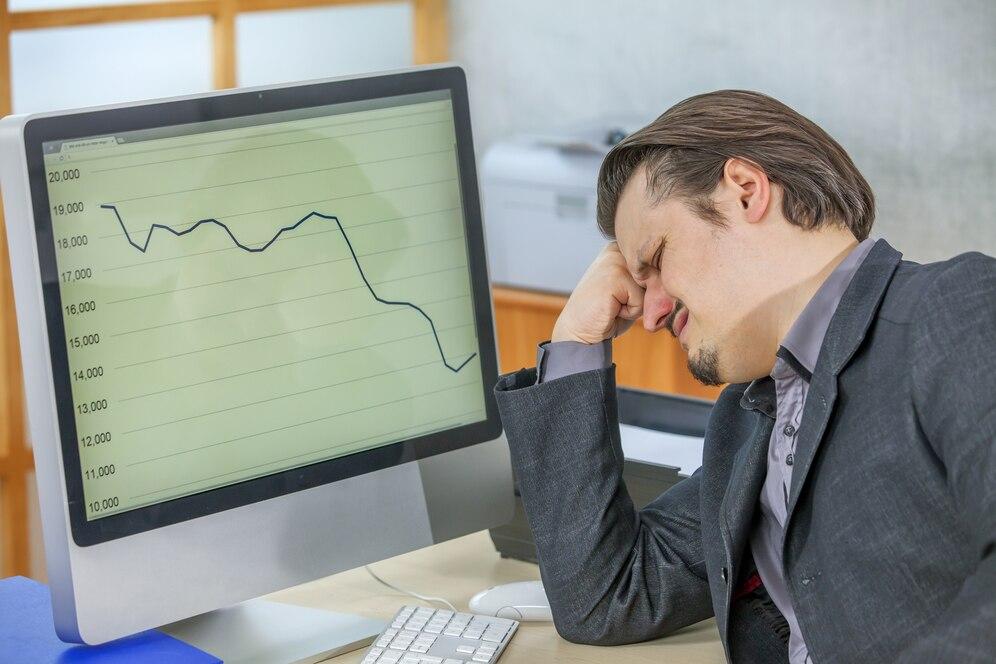Trading on financial markets is becoming increasingly popular, and the number of traders continues to grow every day. However, with the growing interest in this field, there is also a rise in fraudulent platforms that, posing as legitimate brokers, deceive users. The cunning of these platforms can lead to significant financial losses for honest traders.
Understanding Fake Trading Platforms
Fake trading platforms often disguise themselves as genuine brokers and offer enticing trading conditions. The main goal of such platforms is to get money from traders, after which the scammers disappear. Often, fraudulent platforms use various methods to deceive users, from attractive web designs to promises of unrealistically high profits.
The operation of fraudulent platforms is often based on the use of psychology. They attract traders with deceptively high income, easy trading conditions, and minimal risks. Over time, scammers may even establish contact with traders, offering them "investment advice" or "personal managers," who are actually part of the scheme.

Signs of Fake Brokers
There are several signs that can help determine if a broker is fraudulent. Identifying these characteristics can help protect your financial resources.
Licensing and Regulation
The first thing to pay attention to is the presence of a license. Legitimate brokers must be registered with regulatory bodies such as the FCA (UK), ASIC (Australia), or SEC (USA). If the broker's website does not provide licensing information or the data raises doubts, this may be a clear sign of fraud.
Unrealistic Promises
If a broker promises guaranteed high profits with minimal risks, this can be a warning signal. Such promises are often used by scammers to attract money from inexperienced traders. Real traders understand that trading always involves risks, and despite the opportunities for profitable deals, no one can guarantee success.
Bad Reputation
Before starting to work with a platform, be sure to check reviews about it. Often, scammers can create fake reviews or labs responsible for positive comments. However, if the reviews about the broker are negative, this may be a signal of something suspicious. Explore various sources and forums to ensure the platform's reliability.

How to Protect Yourself from Trading Scams
Following a few simple rules can help traders avoid any potential financial fiascos.
Before registering on a platform, take time to study it. Look at official licensing pages, company history, and online reviews. If the broker actively hides information about itself, this could mean something is wrong.
The best way to understand how a platform works is to use a demo account. Legitimate brokers often offer this option so that users can test the functionality without risking real money. If the platform refuses to provide a demo account, consider the feasibility of using it.
Some traders may feel pressured to deposit money as quickly as possible. This approach increases risk, especially if the platform raises even the slightest doubts. It's better to spend more time on analysis and mental peace before making serious investments.

Strategies for Recognizing Scammers
By following scammer trends, traders can develop several strategies to avoid deception.
Evaluate the Platform Interface
Fraudulent platforms often have poorly designed interfaces. They may lack important features or use terrible design. A quality platform usually invests in UX/UI to provide comfortable conditions for its traders.
Periodic Regulator Checks
Check updates and lists of fraudulent brokers. Many government and international regulators publish blacklists where you can find the names of fake platforms. Regular checks help stay informed about current threats.
Fraud in trading causes serious damage both to individual traders and the financial market as a whole. The rapid spread of fake platforms leads to a decrease in trust in the industry. Moreover, scammers can use collected data to invade users' privacy and further implement other fraud schemes.
Losing funds due to a fraudulent platform can seriously affect a trader's psychological state. Many will find themselves under the pressure of stress and negative emotions, which can lead to negative consequences, such as depression and a lack of desire to continue trading.

Real Scam Examples
When considering the issue of fake platforms, it is helpful to know about real cases of fraud. Here are a few cases that have occurred in the trading world.
- A broker offered traders guaranteed profits from currency trading. The site looked professional, and many registered. However, it later turned out that the promised payouts did not occur, and the site simply disappeared. Many traders lost their money, and some are still unable to recover their funds.
- A company launched a cryptocurrency investment platform promising significant profits. Users deposited money but soon faced issues withdrawing funds. It later turned out that the platform was created for just a few months to deceive people and gain quick profit.

Fake trading platforms are a problem faced by many traders. However, by applying simple strategies and being attentive, risks can be minimized. Remember the importance of legitimate licensing, check reviews, and conduct your own research before depositing your funds. Your financial savings deserve respect and protection. Don't forget that trading is not only an opportunity to earn income but also a qualified approach to risk management.


